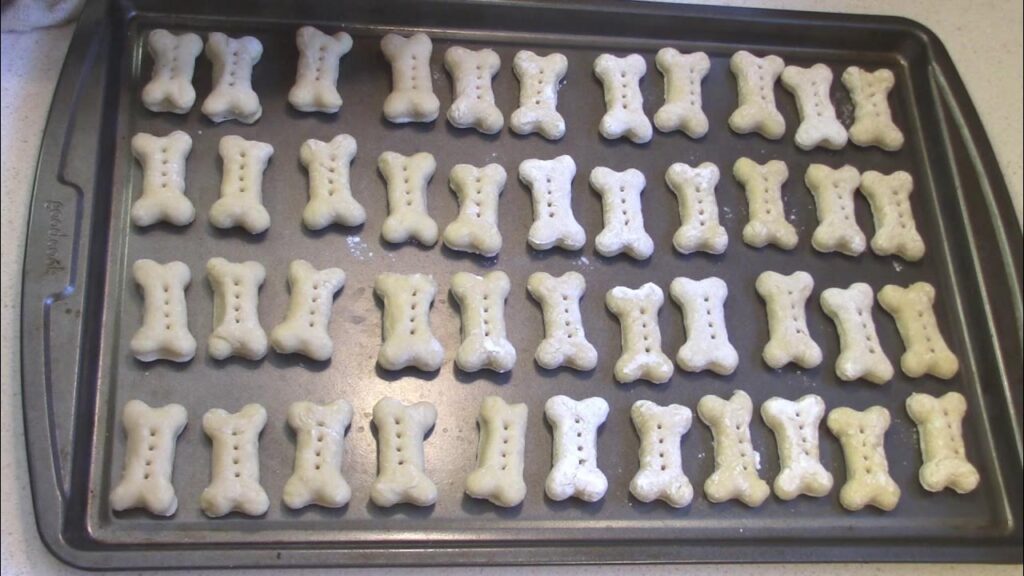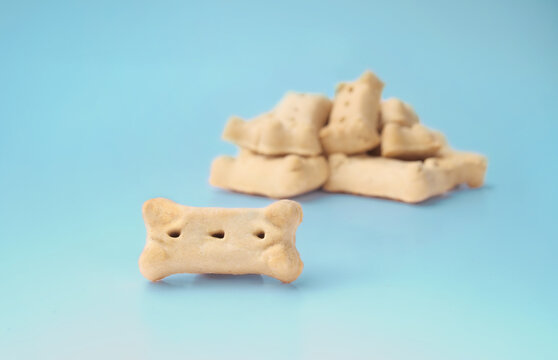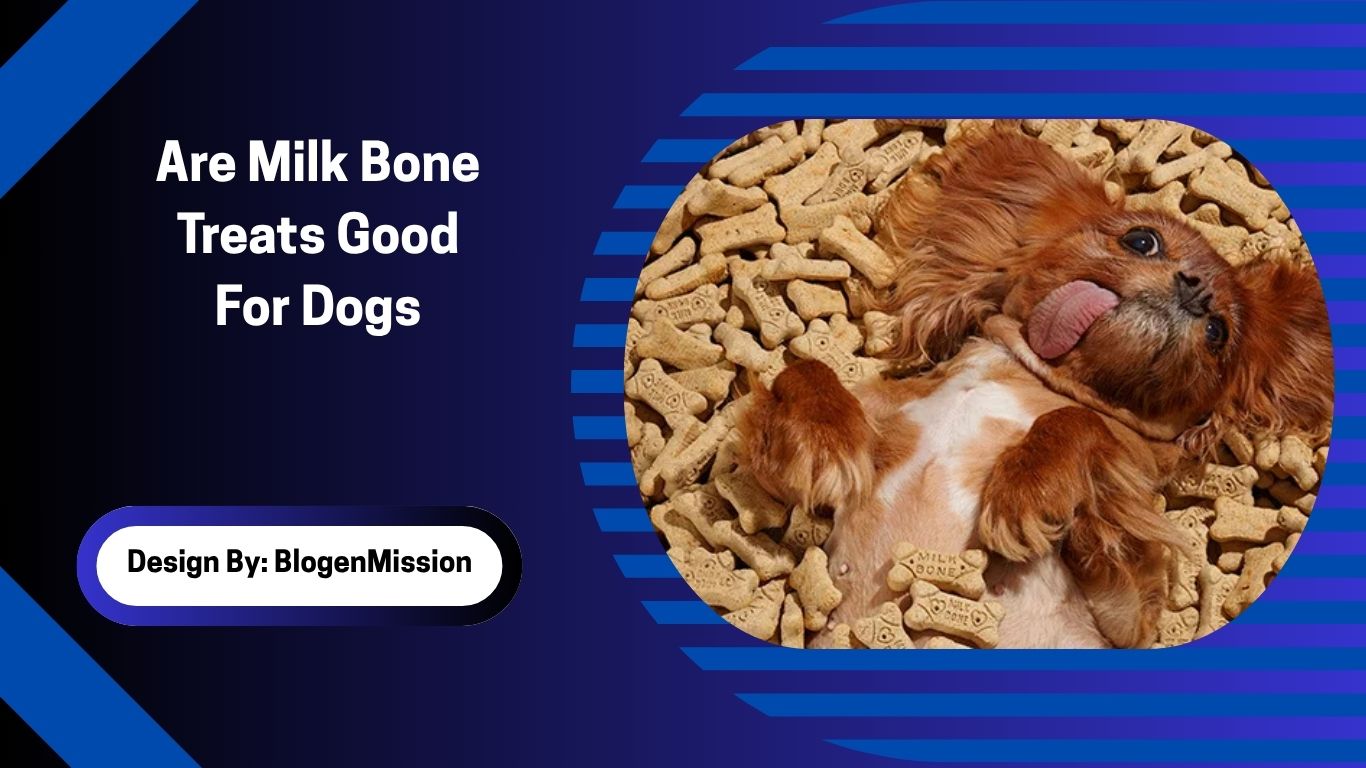Milk-Bone treats are safe in moderation for healthy dogs, but contain artificial preservatives and fillers. Health-conscious pet owners may prefer more natural, single-ingredient treats or homemade alternatives.
Milk-Bone treats have been a staple in pet households for decades. They are readily available, affordable, and widely marketed as a healthy treat option for dogs. But pet owners today are more conscious than ever about what goes into their dogs’ diets. With growing concerns about dog food quality, artificial ingredients, and long-term health effects, the question arises: Are Milk Bone treats good for dogs?
In this article, we’ll dive deep into the ingredients, benefits, potential risks, expert opinions, and natural alternatives to help you make an informed decision.
What Are Milk-Bone Treats?
Milk-Bone is a brand of dog treats first introduced in 1908. Manufactured by Big Heart Pet Brands (a subsidiary of The J.M. Smucker Company), Milk-Bone treats are made to be crunchy snacks that also help clean teeth and freshen breath.
They come in various formulas such as:
- Original Biscuits
- Soft & Chewy Treats
- Brushing Chews
- GravyBones
- Mini & Large Varieties
Each type is tailored to different dog sizes, ages, and dietary needs.
Ingredient Breakdown: What’s Inside a Milk-Bone?

To determine whether Milk-Bone treats are good for dogs, it’s important to analyze the ingredient list. Let’s take the Milk-Bone Original Biscuits as an example. Some of the key ingredients include:
- Wheat flour
- Beef and bone meal
- Milk
- Salt
- Animal fat (preserved with BHA)
- Dicalcium phosphate
- Vitamins (B12, D3, etc.)
- Minerals (zinc sulfate, copper sulfate)
Pros of the Ingredients:
- Protein sources like beef and bone meal.
- Added vitamins and minerals to support immune function and bone health.
- Crunchy texture to support dental hygiene.
Cons of the Ingredients:
- BHA (Butylated Hydroxyanisole): A controversial preservative linked to cancer in lab animals.
- Wheat and fillers: Common allergens for some dogs.
- Artificial colors and flavors: May trigger sensitivities or hyperactivity in certain breeds.
Are Milk-Bone Treats Safe for Dogs?
FDA & Safety Standards
Milk-Bone treats are FDA-regulated and considered safe for consumption under the general guidelines. However, safety doesn’t necessarily mean optimal health benefits. Many pet nutritionists caution against long-term, frequent use due to:
- Preservatives like BHA
- High salt content
- Low bioavailable protein compared to whole food sources
Reported Issues from Pet Owners
Some pet owners have reported issues such as:
- Skin allergies
- Gastrointestinal upset
- Behavioral changes
These issues are often linked to dogs with sensitive stomachs or food intolerances. For healthy dogs with no known allergies, occasional Milk-Bone consumption may not pose a significant risk.
Nutritional Value of Milk-Bone Treats
Let’s analyze the nutritional profile of a standard Milk-Bone Original Biscuit (medium size):
- Calories per treat: ~40
- Crude protein: 12%
- Crude fat: 5%
- Crude fiber: 3.5%
- Moisture: 10%
For comparison:
- High-quality natural treats like freeze-dried liver offer protein levels above 60% with no additives or preservatives.
- Homemade treats provide transparency in ingredients.
Verdict:
Milk-Bones are nutritionally average. They provide basic benefits but fall short when compared to premium or homemade treats.
Dental Health Claims: Do They Hold Up?
Milk-Bone’s crunchy texture helps remove plaque and tartar. They are even VOHC (Veterinary Oral Health Council)-approved for reducing tartar build-up.
However:
- They are not a substitute for regular brushing.
- Some dogs may gulp them instead of chewing, minimizing dental benefits.
- Brushing chews (like Milk-Bone’s Brushing Chews line) offer more dental benefit due to shape and chewing duration.
Are Milk-Bone Treats Good for Puppies?
Milk-Bone offers puppy-specific versions that are:
- Smaller in size
- Softer in texture
- Fortified with DHA (for brain development)
However, experts recommend introducing new treats slowly and monitoring for signs of intolerance. Puppies have more sensitive digestion and may benefit more from simple, single-ingredient treats like boiled chicken, carrots, or store-bought training treats with minimal ingredients.
How Often Should You Give Your Dog Milk-Bones?
Veterinarians recommend that treats make up no more than 10% of your dog’s daily caloric intake. So, for a 30-lb dog needing 800 calories per day:
- Max treat calories/day: 80
- That’s ~2 Milk-Bones (medium size)
Overfeeding treats like Milk-Bone can contribute to obesity, especially in sedentary or senior dogs.
What Do Vets and Experts Say?
Here’s what veterinary experts generally say about Milk-Bone treats:
Dr. Karen Becker (Holistic Veterinarian):
“I do not recommend treats with preservatives like BHA. If you can’t pronounce it or don’t recognize it as food, it’s best avoided.”
American Kennel Club (AKC):
“Crunchy Milk-Bone treats can be a fun occasional snack, but they shouldn’t be considered a health supplement.”
Pet Nutritionists:
- Generally prefer freeze-dried meat, fruits, and vegetables.
- Caution against high-carbohydrate treats for diabetic or overweight dogs.
Healthy Alternatives to Milk-Bone

If you’re seeking a more wholesome option, consider these:
1. Homemade Dog Treats
Ingredients like oats, peanut butter, pumpkin, and eggs make safe, low-cost treats.
2. Single-Ingredient Treats
Examples: Freeze-dried liver, dehydrated salmon, sweet potato slices.
3. Natural Commercial Treats
Brands like:
- Zuke’s Mini Naturals
- Blue Buffalo Wilderness
- Wellness Soft Puppy Bites
4. Human Foods (in moderation)
Carrots, apple slices (no seeds), blueberries, green beans. Always consult your vet before introducing new treats, especially if your dog has medical conditions.
Environmental & Ethical Considerations
Milk-Bone treats are mass-produced, often with ingredients that don’t meet organic or sustainable standards. For pet owners concerned about:
- Factory farming
- Excessive packaging
- Non-biodegradable materials
choosing eco-friendly, local brands may be a better option.
FAQs
1. Can dogs be allergic to Milk-Bone treats?
Yes, dogs with grain, dairy, or artificial additive sensitivities may show allergic reactions such as itching, vomiting, or diarrhea after consuming Milk-Bone treats.
2. Do Milk-Bone treats help with bad breath?
Milk-Bone Brushing Chews are designed to reduce tartar and help freshen breath, though they’re not a substitute for daily brushing or professional dental cleanings.
3. Are there any recalls on Milk-Bone treats?
As of now, Milk-Bone has not had any major recalls. However, it’s wise to check FDA pet recall alerts regularly to stay updated on all pet products.
4. Can Milk-Bone treats be used for training?
Yes, but choose smaller versions or break them into pieces to avoid overfeeding. Soft treats are often better for fast-paced training sessions.
5. Are Milk-Bone treats safe for senior dogs?
Senior dogs can eat Milk-Bone treats if they have no dietary restrictions, but soft or senior-specific versions are better for those with dental or digestive issues.
Conclusion
Milk-Bone treats are a widely available and affordable dog snack with added vitamins and dental benefits. While generally safe for most dogs in moderation, concerns about preservatives, allergens, and artificial ingredients may prompt some pet owners to seek healthier alternatives. For dogs with food sensitivities, single-ingredient or homemade options may offer a safer and more nutritious choice. Always consult your veterinarian when choosing treats, especially if your dog has health conditions, and remember that moderation is key to keeping your dog happy and healthy.
Related Post:
- Why Is My Cat Dry Heaving – Causes, Symptoms & What to Do!
- Why Does My Cat Sound Congested – Guide to Noisy Breathing!
- When To Euthanize A Cat With Seizures – Quality-of-Life Considerations!
